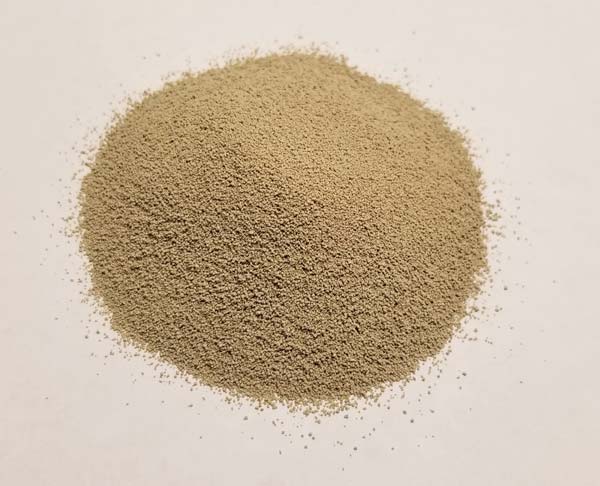Ah, the glory and heartbreak that are citrus fruits in winemaking. So many aromas! So many bright flavors! So much acid! And so many potential bitter compounds.
This is where a good fining agent comes in. A fining agent is something that is added to wine that binds with something undesired, then becomes a sediment and is left behind by racking or filtration.
An example of a fining agent is isinglass, a protein isolated from the swim bladders of fish. This is the source of the “Fish Guts in Your Wine?” headline you sometimes see in sensationalist-
leaning wine blogs or consumer pieces. Said pieces are often rooted in click-thrus rather than a true desire to educate wine drinkers. The truth of the matter is that, while good at pulling out excess tannins in wine, isinglass is expensive and, in my experience, rarely used in the wine industry.
Not all fining agents are animal proteins, though isinglass and the ancient “bulls’ blood” seem to get most of the headlines. Bentonite, a naturally occurring mineral clay, is great at adhering to excess proteins in wine and then settling into a compact layer at the bottom of a tank or barrel. Bentonite is very commonly used in most commercial white and rosé wines; its use renders a wine “heat stable,” that is, resistant to forming an unsightly protein haze when the wine is subjected to heat during storage.
Do all wines have fining agents used in them? In my estimation, not by a long shot. Fining agents are expensive and take time to use, not to mention the recommended bench trials to determine the correct dosage. They are a definite intervention in the natural winemaking process and their use needs to be judicious and well thought through. I always say, “Your best fining agent is time.” That and picking your starting material correctly. Fining is usually used to correct faults and flaws or, at best, to nudge a wine in a desired direction.
Bentonite, a naturally occurring mineral clay, is great at adhering to excess proteins in wine and then settling into a compact layer at the bottom of a tank or barrel.
It does appear, however, that you are indeed in need of using a fining agent to remove some of that residual bitterness common in citrus wines. You’ll have to experiment to find the correct fining agent or mix of them. You might want to peruse lists of fining agents sold by various wine supply companies like Laffort, Scott Labs, Enartis, or AEB. They’ve got everything from simple one-ingredient fining agents like the new vegan gelatins to mixes that include things like PVPP (polyvinylpolypyrrolidone), bentonite, and casein. They all have guides about which types of fining agents help bitterness and recommended dosage ranges, but here’s a short list of things I would recommend. Fining agents for bitterness:
- Proteins like gelatin
- Bentonite + casein blends
- PVPP and/or PVPP+protein+ bentonite blends
If you’re a reader of this column you know you can’t get through an issue without me telling everyone that we’ve got to do bench trials to determine how much of any given additive to use . . . and it’s the same case here. Used at higher than needed doses, fining agents can remove too many things from your wine rendering it “stripped” of complexity and sometimes of aromas and color compounds. For this reason, it’s important to only use the minimum effective dose to treat your wine.

When using fining agents, it’s important to follow the manufacturer’s directions and introduce it into your wine according to their suggestions. Usually, fining agents come in liquid or powder form, and you’ll usually dilute the additive in 10 times its weight in water (sometimes the wine itself) and then stir gently but completely into the wine before leaving it to settle. How long does treatment take? Sometimes fining agents seem to work almost instantaneously but it’s always a good idea to take as long as the instructions suggest or, in the absence of directions, for about a week. This is where winemaking in a carboy is a lucky thing; you can visually watch the settling happen over time and will know when you’ve achieved good compaction! Then you typically will “rack the wine off” of the fining agent into a clean, gassed container, leaving the sediment (comprised of the fining agent and the compounds you removed) behind. I wish you luck with hunting for the perfect fining agent magic to combat your bitterness while preserving the charm and freshness of your grapefruit wine.




